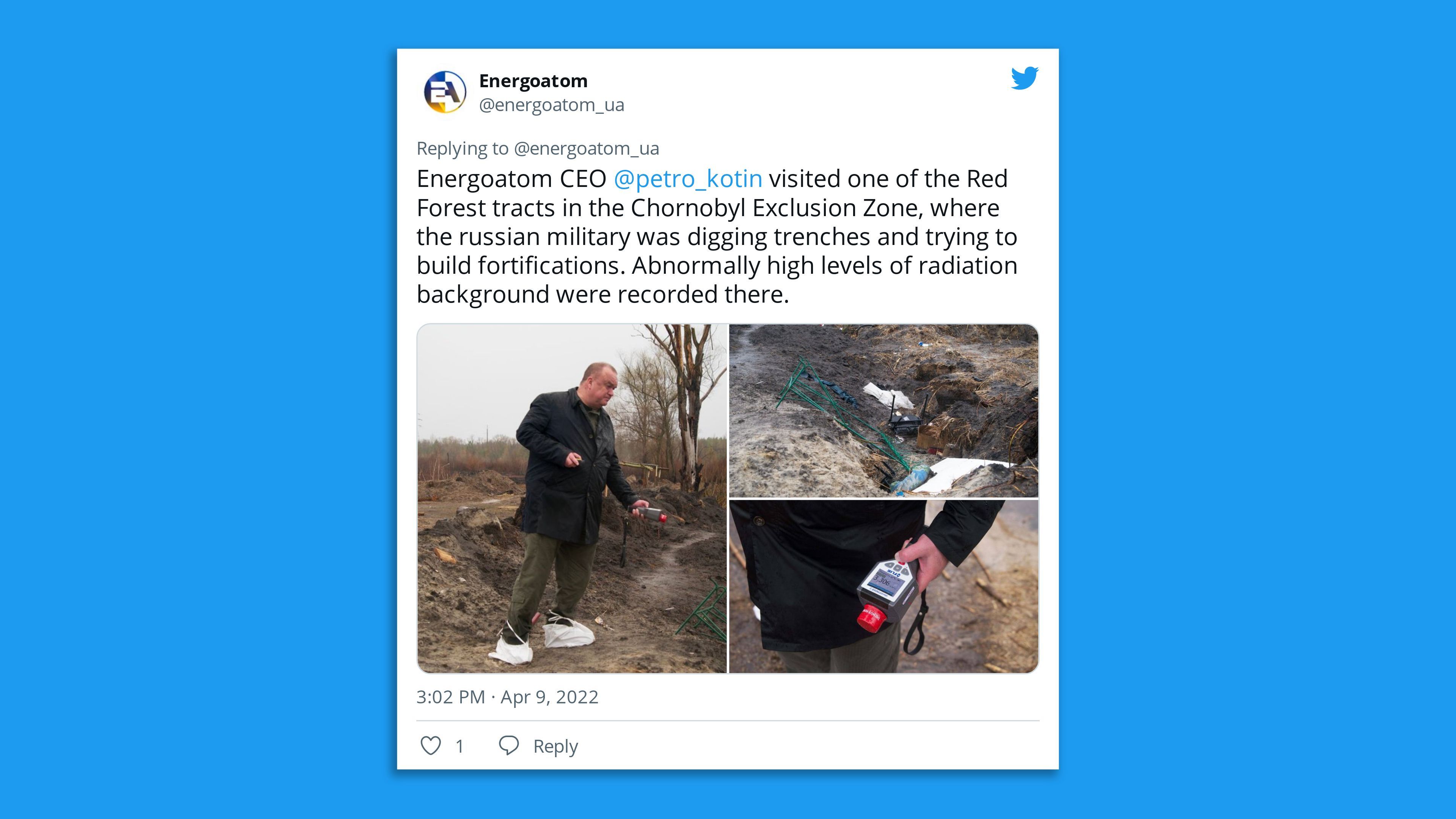Ukrainian officials reported Saturday "abnormally high" radiation in areas of the Chernobyl Exclusion Zone, where they say Russian troops dug trenches and tried to build fortifications when they occupied the site until late last month.
Why it matters: It's one of the world's most toxic places due to the 1986 Chernobyl Nuclear Power Plant disaster. The International Atomic Energy Agency (IAEA) could not immediately verify claims of radioactive dust in areas of the zone known as the "Red Forest," but is due to send a team to the region to assess damage.

Yes, but: Rafael Mariano Grossi director general of United Nations nuclear watchdog the IAEA, said in a statement Saturday that despite "the increase in the level of radioactive contamination … due to non-conformity with requirements of radiation safety and strict access procedures," the radiation situation was "within the limits" for the site.
What they're saying: Valeriy Simyonov, chief safety engineer for the Chernobyl nuclear site, told the New York Times on Saturday that Russian troops "ignored" engineers' warnings of radiation risks to digging trenches after they seized control of the station.
- "They came and did whatever they wanted" in the zone around the plant that's some 80 miles north of Kyiv, Simyonov said.
- Ukrainian soldier Ihor Ugolkov told CNN, which visited Chernobyl, that Russian troops "went to the Red Forest and brought radioactive material back with them on their shoes."
- "Other places are fine, but radiation increased here, because they were living here," Ugolkov added.
The big picture: Ukrainian officials reported that Russian troops forced about half of the Chernobyl Nuclear Power Plant employees to stay at the facility for more than three weeks before finally releasing the 64 workers late last month.
- About 170 Ukrainian national guard members were also held hostage in the basement of the station, according to the BBC, which visited the area this week.
- Oleksandr Lobada, a radiation safety supervisor at the plant, told the outlet engineers "had to constantly negotiate" with Russian forces and "try hard not to offend them, so that they allowed our personnel to manage the facility."
Flashback: The plant lost direct power and had to rely on emergency diesel generators for three days in early March after power lines were damaged — raising concerns that cooling of radioactive material stored there could be disrupted and risk radioactive leakage that could be carried by wind to other parts of Europe.
- Lobada told the BBC that when the site lost power, he moved to "find fuel to keep the generator running" by "stealing" some of it from Russian forces.
- "If we had lost power, it could have been catastrophic," Oleksandr said. "Radioactive material could have been released."
Of note: Although Chernobyl isn't an active power station, the sarcophagus above the reactor that exploded in the nuclear disaster has to be maintained in order to prevent further radiation leaks, per CNN.
- A significant amount of spent nuclear fuel has to be taken care of at the plant.
What to watch: Ukrainian officials said they had "not yet been possible to restore the operation of radiation and other sensors due to the absence of required maintenance and other specialized staff," according to Grossi.
Go deeper... Dashboard: Russian invasion of Ukraine







